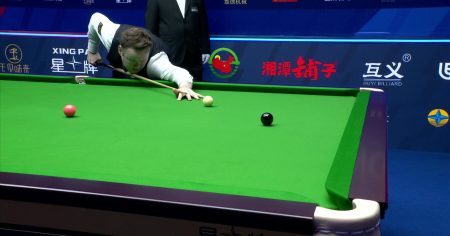The incident involving Nick Kyrgios and the umpire during his doubles match with Thanasi Kokkinakis at the Australian Open highlighted the contentious nature of code violations and the often-blurred lines between gamesmanship, genuine frustration, and the enforcement of rules within the high-pressure environment of professional tennis. Kyrgios, known for his volatile temperament and outspoken personality, took umbrage with a code violation issued to Kokkinakis for allegedly receiving coaching from their player’s box. This seemingly minor infraction ignited a heated exchange between Kyrgios and the umpire, demonstrating the simmering tensions that can quickly escalate during a match and the complex relationship between players, officials, and the application of sometimes subjective rules.
The crux of the disagreement revolved around the interpretation of “coaching.” While explicit coaching from the player’s box is prohibited, subtle gestures, seemingly innocuous comments, and even the general energy projected from the support team can be construed as a form of communication. Kyrgios argued vehemently that Kokkinakis had not received coaching, asserting that the umpire’s decision was incorrect and unfairly penalized his partner. This type of dispute is not uncommon in tennis, as the distinction between permitted encouragement and prohibited coaching can be difficult to define and even harder to enforce consistently. The umpire, tasked with maintaining order and upholding the rules, is often placed in a precarious position, having to make split-second judgments that can significantly impact the flow and outcome of a match.
The heated exchange between Kyrgios and the umpire underscores the inherent pressure cooker atmosphere of Grand Slam tournaments like the Australian Open. Players are competing at the highest level, facing intense scrutiny from fans, media, and sponsors. The stakes are high, and every point, every game, every decision carries immense weight. In this charged environment, even minor incidents can trigger emotional outbursts, especially from players known for their fiery personalities. Kyrgios, in particular, has a history of challenging authority and expressing his dissatisfaction with officiating, a trait that has both endeared him to some fans who appreciate his candidness and alienated others who view his behavior as unprofessional.
The incident also raises questions about the effectiveness and fairness of the coaching rule itself. Critics argue that the rule is difficult to enforce consistently and often leads to contentious situations like the one involving Kyrgios and Kokkinakis. They contend that some level of communication between players and their support teams is inevitable and that attempting to completely eliminate it is unrealistic. Furthermore, they argue that the current rule disproportionately affects players who rely on emotional support and guidance from their coaches, potentially putting them at a disadvantage compared to those who are more self-sufficient.
The debate surrounding coaching in tennis is not new. While some believe that allowing coaching during matches would level the playing field and provide valuable strategic insights to players, others argue that it would undermine the individual nature of the sport and diminish the importance of problem-solving and independent decision-making on the court. The existing rule, designed to preserve the integrity of the game as a test of individual skill and mental fortitude, is often perceived as ambiguous and susceptible to varying interpretations. This inconsistency in application fuels frustration amongst players and can create the perception of unfairness, as evidenced by Kyrgios’s reaction.
Ultimately, the Kyrgios-Kokkinakis incident serves as a microcosm of the larger debate surrounding the role of coaching, the authority of umpires, and the delicate balance between maintaining order and allowing for the expression of emotions within the highly competitive world of professional tennis. The incident highlights the need for clearer guidelines regarding coaching and for more consistent application of the rules to ensure fairness and minimize contentious situations. It also underscores the importance of respectful communication between players and officials, even in the heat of competition. As the sport continues to evolve, finding the right balance between these competing interests will be crucial for maintaining its integrity and appeal. The readily available access to live and on-demand streaming of events like the Australian Open on platforms like discovery+ allows viewers to witness these complex dynamics firsthand, prompting discussions and debates about the nuances of the game and its rules.














